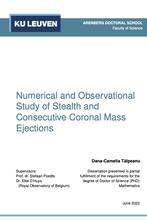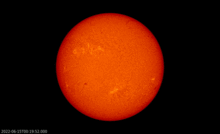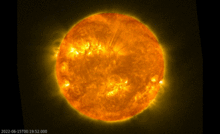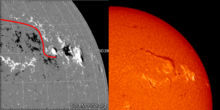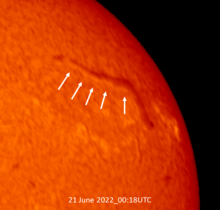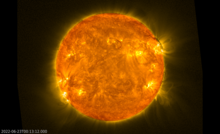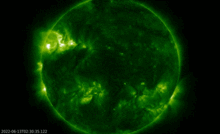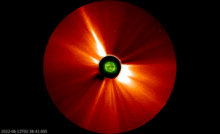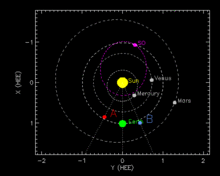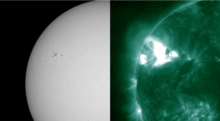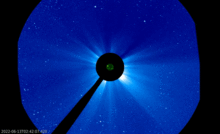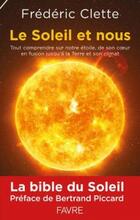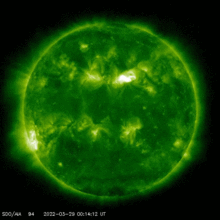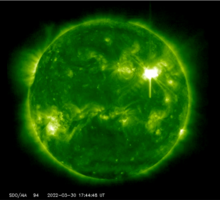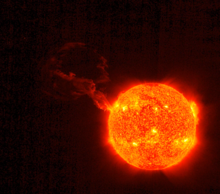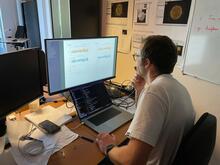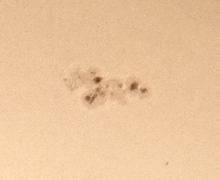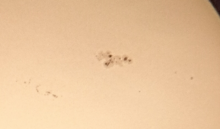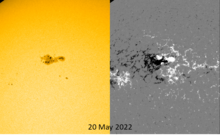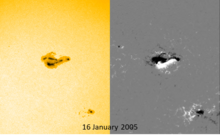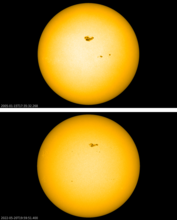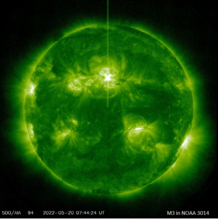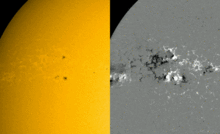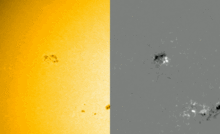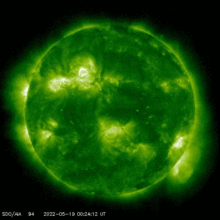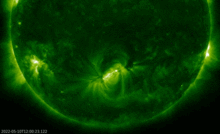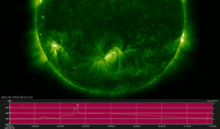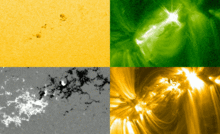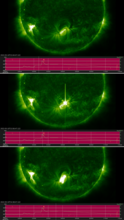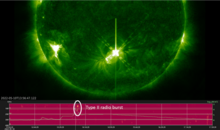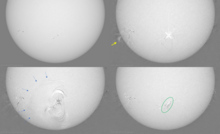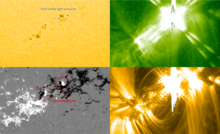news
Submitted on 2022-07-05
On 20 June, 2022 Dana-Camelia Talpeanu successfully defended her PhD thesis ‘Numerical and Observational Study of Stealth and Consecutive Coronal Mass Ejections’.
Submitted on 2022-07-01
The Belgian Space Pole will open its gates on September 24th and 25th!
Submitted on 2022-06-28
A filament started to stretch itself to several 100.000 km in length from 15 June onwards. The filament's base was adorned by a bright rim.
Submitted on 2022-06-20
The Sun produced a long duration M3 flare on 13 June. It was accompanied by a coronal mass ejection that delivered a glancing blow to the Earth's magnetic field early on 15 June.
Submitted on 2022-06-07
Inspired by his career and his experience in popularising science, Frédéric Clette presents us, in this book intended for a wide readership, a global panorama of the Sun, its multiple influences on our planet and us, humans, as well as the new dangers it may bring for our present society.
Submitted on 2022-06-07
The STCE's SC25 Tracking page has been updated to reflect the latest evolution in some critical space weather parameters for the ongoing solar cycle 25 (SC25).
Submitted on 2022-06-02
The EUI PI team welcomes research proposals for the first round of its Guest Investigator Program for research based on EUI and Solar Orbiter data analysis by scientists outside the EUI PI team.
Submitted on 2022-05-30
ROB/SIDC has successfully passed the Flight Acceptance Review of its Science Operations Centre for PROBA-3/ASPIICS
Submitted on 2022-05-24
NOAA 3014 has been the largest sunspot group of the ongoing solar cycle so far, but despite its magnetic complexity, it has remained an underachiever in flaring activity.
Submitted on 2022-05-17
Last week's X-class flare showed a complex evolution in its soft x-ray emission.
Pages
Zircon - This is a contributing Drupal Theme
Design by
WeebPal.


